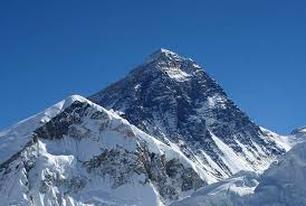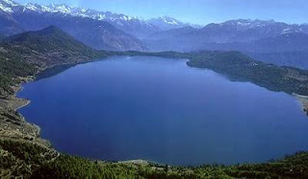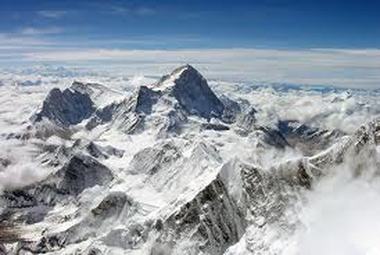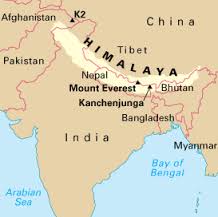The Himalayas

The Himalayas, also Himalaya, is a mountain range in Asia separating the plains of the Indian subcontinent from the Tibetan Plateau.
The Himalayan range is home to some of the planet's highest peaks, including the highest, Mount Everest. The Himalayas include over a hundred mountains exceeding 7,200 metres (23,600 ft) in height.
The Himalayas have profoundly shaped the cultures of South Asia. Many Himalayan peaks are sacred in both Hinduism and Buddhism.
Besides the Greater Himalayas of these high peaks there are parallel lower ranges. The first foothills, reaching about a thousand meters along the northern edge of the plains, are called the Sivalik Hills or Sub-Himalayan Range. Further north is a higher range reaching two to three thousand meters known as the Lower Himalayan or Mahabharat Range.
The Himalayas abut or cross five countries: Bhutan, India, Nepal, China, and Pakistan, with the first three countries having sovereignty over most of the range.[3] The Himalayas are bordered on the northwest by the Karakoram and Hindu Kush ranges, on the north by the Tibetan Plateau, and on the south by the Indo-Gangetic Plain.

Lakes of the Himalayas
The Himalayan region is dotted with hundreds of lakes. Most lakes are found at altitudes of less than 5,000 m, with the size of the lakes diminishing with altitude. Pangong Tso, which is spread across the border between India and China, and Yamdrok Tso, located in central Tibet, are amongst the largest with surface areas of 700 km², and 638 km², respectively. Other notable lakes include Gurudogmar lake in North Sikkim, Tsongmo lake, near the Indo-China border in Sikkim, and Tilicho lake in Nepal in the Annapurna massif.
The mountain lakes are known to geographers as tarns if they are caused by glacial activity. Tarns are found mostly in the upper reaches of the Himalaya, above 5,500 metres
The Himalayan region is dotted with hundreds of lakes. Most lakes are found at altitudes of less than 5,000 m, with the size of the lakes diminishing with altitude. Pangong Tso, which is spread across the border between India and China, and Yamdrok Tso, located in central Tibet, are amongst the largest with surface areas of 700 km², and 638 km², respectively. Other notable lakes include Gurudogmar lake in North Sikkim, Tsongmo lake, near the Indo-China border in Sikkim, and Tilicho lake in Nepal in the Annapurna massif.
The mountain lakes are known to geographers as tarns if they are caused by glacial activity. Tarns are found mostly in the upper reaches of the Himalaya, above 5,500 metres

Religion In the Himalayas
In Hinduism, the Himalaya have also been personified as the god Himavat, the God of snow, who is mentioned in the Mahabharata. He is father of Ganga and Saraswati, who became rivers, and Parvati, who married Shiva.
Several places in the Himalaya are of religious significance in Hinduism, Jainism, Sikhism, Buddhism, and Islam. A notable example of a religious site is Paro Taktsang, where Padmasambhava is said to have founded Buddhism in Bhutan.
A number of Tibetan Buddhist sites are situated in the Himalaya, including the residence of the Dalai Lama. There were over 6,000 monasteries in Tibet.[23] The Tibetan Muslims had their own mosques in Lhasa and Shigatse.
In Hinduism, the Himalaya have also been personified as the god Himavat, the God of snow, who is mentioned in the Mahabharata. He is father of Ganga and Saraswati, who became rivers, and Parvati, who married Shiva.
Several places in the Himalaya are of religious significance in Hinduism, Jainism, Sikhism, Buddhism, and Islam. A notable example of a religious site is Paro Taktsang, where Padmasambhava is said to have founded Buddhism in Bhutan.
A number of Tibetan Buddhist sites are situated in the Himalaya, including the residence of the Dalai Lama. There were over 6,000 monasteries in Tibet.[23] The Tibetan Muslims had their own mosques in Lhasa and Shigatse.


